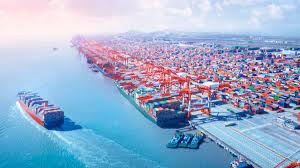
Port congestion cascades into intra-Asia services, disrupting container traffic

SINGAPORE : The global cascading effect of port congestion is playing havoc with intra-Asia trade lanes, with large amounts of cargo stuck at transhipment hubs in the south-east.
According to Peter Sundara, global head of ocean freight for a major cargo owner, transhipment freight from Europe, Africa, Oceania and the US is being “dumped” – in Singapore, particularly.
He told : “It’s not a port productivity problem, rather that feeders and mainline vessels are discharging cargo with no mainline connecting vessels coming in on time to load the containers.”
Late last month, Singapore’s port authority (PSA) was forced to open the storage area of its new Tuas mega container terminal to cope with the overflow of boxes.
And, while mainline vessel delays have led to transhipment cargo getting stuck in Singapore, Mr Sundara noted that the “cascading effect” of congestion was impacting intra-Asia feeder traffic, too.
“For example, in Indonesia there’s congestion, and that delays feeder vessels bringing cargo from Jakarta to Singapore. We are also facing a chronic shortage of boxes in Indonesia, Thailand and Vietnam, and a lack of space.”
But Mr Sundara said he was “hopeful” carriers would inject more capacity quickly into South-east Asia, given the dip in demand and rates from China.
“Vietnam has come out of lockdown and there’s a lot of pent-up production; the demand is quite huge,” he said. “So it’s a perfect time for the carriers to put in more capacity, since the production from China has slowed following the power rationing.”
Taiwanese carrier Wan Hai has swapped some transpacific capacity back into the intra-Asia market to serve surging Vietnamese volumes, and also India, but it remains to be seen whether any mainline carriers follow suit.
Shipping lines have been quick to blank sailings from China, however, with the Ocean Alliance, for example, recently blanking 21 transpacific eastbound sailings and two for Asia-North Europe, Mr Sundara noted.
“We understand the carriers might be blanking sailings because of power shortages in China impacting export production, but also because of the huge port congestion in the US and Europe, which have disrupted their vessel schedules,” he added.
“The other possible advantage of blank sailings for the carriers is that they stop rates from falling further, allowing them a baseline for upcoming contract negotiations.”
Furthermore, he said, it would likely be a short-lived blip for Chinese freight rates, which would “soon pick up again”, given inventories in the US and Europe would need replenishing – and the Chinese New Year cargo rush is just around the corner.

